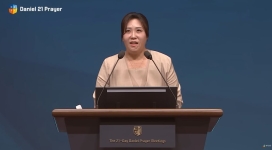
A white dwarf star is slowly eroding a series of Earth-sized bodies in orbit. Now astronomers say that this discovery changes everything we know about the universe, Australia's News reported.
Experts were left in awe upon witnessing how a white dwarf - a star made of electron-degenerate matter and with a mass comparable to the Sun - seemed to break apart the planets that were circulating it. At least six planet-sized material were discovered travelling around the star at varying distances. The location was around 750 light years away from Earth, in the constellation Virgo.
However, during the process, the planets seem to break up into debris that scatter around the atmosphere of the star known as WD 1145+017. The broken parts are dust that are made up of elements like silicon, calcium, iron, magnesium and aluminium. It is thought that the total mass of the debris may yet be as large as the Ceres asteroid in our solar system.
What's happening here?
Astronomers say that the star's force is slowly stripping away the elements of the orbiting planets and are sucking them into itself. The phenomena were spotted through NASA's Kepler K2 mission, the space observatory that takes note when the stars dim when an orbiting body crosses them, The Space Reporter says.
University of NSW physicist and co-author Rob Wittenmyer said that the dying planets are "dumping" material on the white dwarf.
However, the Cfa Harvard scientists are not quick to point the destruction of the planets to the white dwarf, the Cfa-Harvard website said. Though it is true that white dwarfs seemed to acquire heavy metals when these consumed rocky planets or asteroids, proof that this is what truly happened to remain circumstantial.
Nevertheless, the case for WD 1145+017 was persuasive thanks to the presence of three hints: a polluted white dwarf, a debris disk, and at least one compact, rocky object. This is strong proof linking white dwarf pollution to the destruction of rocky planets, says Andrew Vanderburg, Harvard University astrophysicist and author.
Still, scientists post possibilities and open the possibility that the situation was due to an existing planet's orbit turning unstable and being kicked inward.
Vanderburg admits this may change everything we know about the universe. "We're watching a solar system get destroyed."







